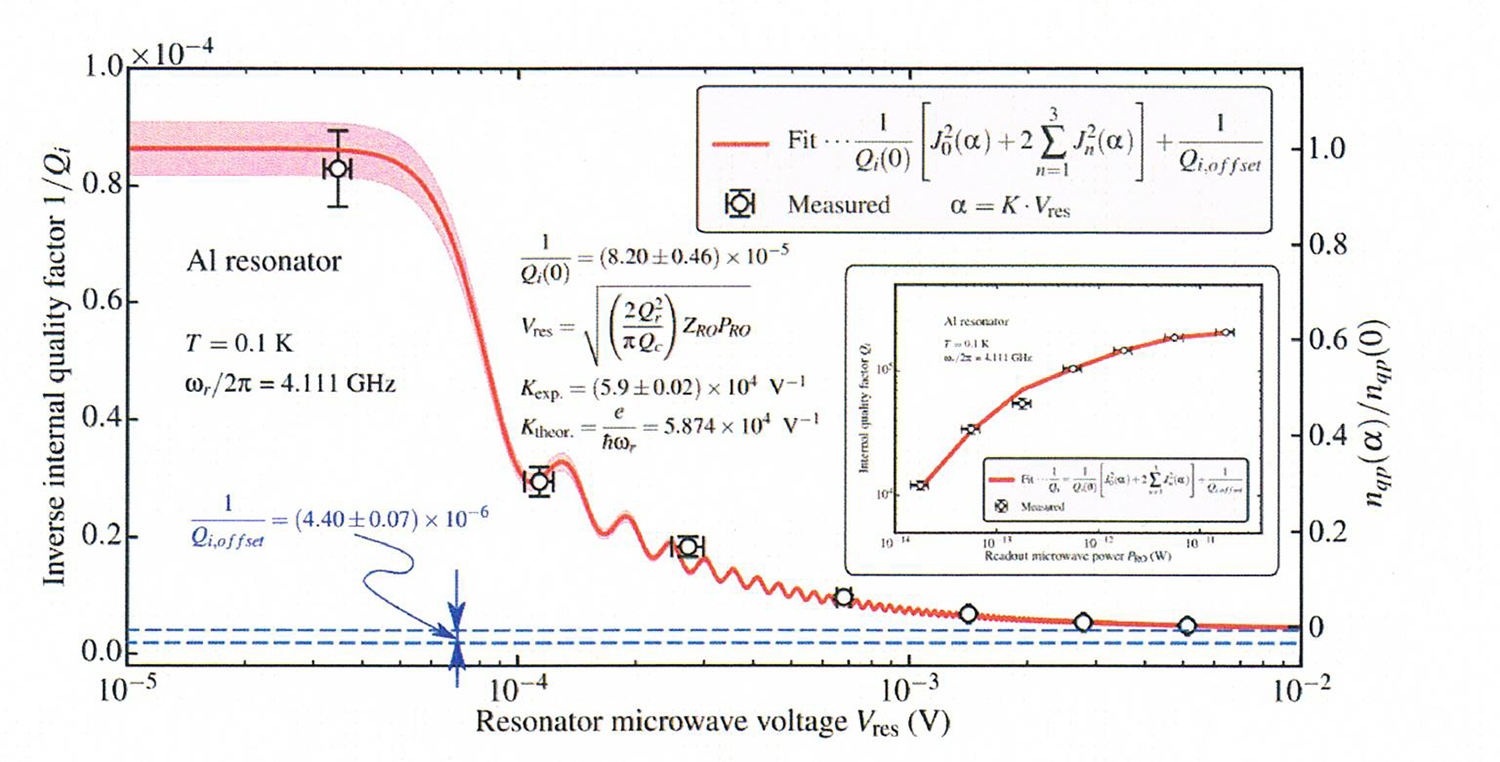ED3-6
Contribution of the conductivity of residual quasiparticles to the characteristics of superconducting thin-film resonators
*Takashi Noguchi1, S Mima1, C Otani1
- NAOJ/RIKEN, RIKEN1
We have systematically studied the resonance characteristics of Al superconducting resonators from the viewpoint of the contribution of residual quasiparticles.
It is found that both the measured quality factors and the fractional frequency as a function of temperature for the Al resonators agree very well with those predicted by the residual resistance contributed by the Kondo effect.
It is known that the wavefunction of a quasiparticle is modulated by the perturbation of the microwave voltage under the microwave field and the quasiparticle state splits into many levels. Consequently, transitions of quasiparticles to the lower energy states occur and the number of quasiparticles near the Fermi level, which mainly contribute to the normal conductivity, decreases with increasing the strength of the microwave field. Therefore, the reduction of inverse internal quality factor 1/Qi with increasing the readout microwave power PRO can be attributed to the decrease of the quasiparticle number or the normal conductivity, due to the energy redistribution of the quasiparticles under the strong microwave field in the resonator.
It is found by the fitting of 1/Qi as a function of internal microwave voltage in the resonator that the measured 1/Qi of the resonator agrees well with the calculated quasiparticle number as a function of the readout microwave power.
From the fitting of 1/Qi as a function of internal microwave voltage in the resonator, we have successfully obtained the scaling parameter between the argument of the Bessel function and the internal microwave voltage, which agrees very well with the theoretical value.
From those results, it is successfully demonstrated that both the temperature and readout power dependence of the resonance characteristics of a superconducting resonator is well described by the contribution of the normal conductivity of residual quasiparticles, without the two-level system (TLS) assumption which is widely used in the explanation of the resonance characteristics of superconducting resonators.
Fig. 1 The inverse internal quality factors of 1/Qi of an Al resonator at T = 0.1 K as a function of microwave voltage in the transmission-line resonator, Vres. Inset is a plot of Qi of the Al resonator at T = 0.1 K as a function of the readout microwave power, PRO . The solid red lines are fits to the measured 1/Qi and Qi, respectively.
